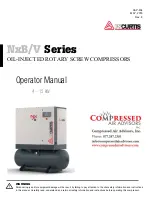
✓
Operation sequence for the Lifeline ARM (page 22)
✓
How to transport a patient while using the Lifeline ARM (page 29)
✓
How to disassemble the Lifeline ARM (page
29)
✓
How to clean and store the Lifeline ARM (page
30)
Introducing the Lifeline ARM
As emergency responders know, any lifesaving technique
demands a high level of excellence in its delivery. During CPR, it
is crucial that rescuers provide effective and uninterrupted chest
compressions to maximize the patient’s chest compression
fraction. Maintaining a level of consistency during manual CPR
can be difficult — and sometimes impossible if there are not
enough rescuers or if the patient requires transport.
The Lifeline ARM offers an automated solution for providing victims of sudden cardiac arrest
with high-quality CPR. It is intended for use as an adjunct to manual CPR when effective
manual CPR is not possible (e.g., during patient transport, or extended CPR when fatigue may
prohibit the delivery of effective/consistent compressions to the victim, or when insufficient
personnel are available to provide effective CPR).
The device is easy to use, easy to transport, and delivers continuous compressions at the
depth and rate recommended by the guidelines of the American Heart Association (AHA) and
the European Resuscitation Council (ERC).
The following statement comes from the
Highlights of 2015 American Heart Association
Guidelines Update for CPR and ECC
1
:
•
There is continued emphasis on the characteristics of high-quality CPR: compressing the
chest at an adequate rate and depth, allowing complete chest recoil after each compression,
minimizing interruptions in compressions, and avoiding excessive ventilation.
•
The recommended chest compression rate is at least 100 per minute.
•
The recommendation for chest compression depth for adults is at least 2 inches (5 cm).
Indications for Use
Before and during use of the Lifeline ARM, you should always follow the accepted guidelines
and your local protocol for CPR.
Once you have confirmed that the patient is unconscious and not breathing, begin manual
CPR and get ready to deploy the Lifeline ARM as appropriate.
1. American Heart Association.
Highlights of 2015 American Heart Association
Guidelines Update for CPR and ECC
. Dallas, TX: American Heart Association; 2015; p5.
RAC-A1515EN-BA
12
Содержание Lifeline ARM
Страница 2: ......
Страница 4: ...RAC A1515EN BA 4 ...
Страница 6: ...RAC A1515EN BA 6 ...
Страница 10: ...RAC A1515EN BA 10 ...
Страница 32: ...RAC A1515EN BA 32 ...
Страница 38: ...RAC A1515EN BA 38 ...
Страница 40: ...RAC A1515EN BA 40 ...
Страница 42: ...RAC A1515EN BA 42 ...
Страница 43: ......
Страница 44: ......













































